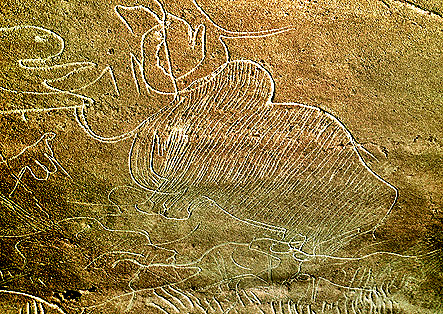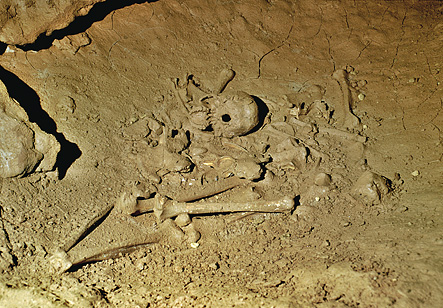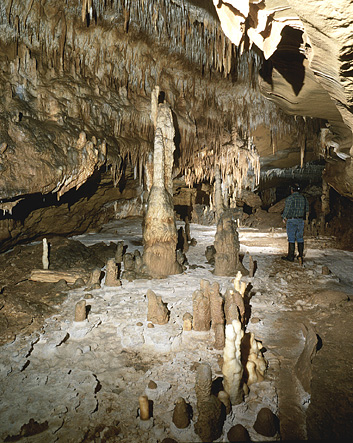Cussac Cave
|
CUSSAC CAVE: A BREACH OF DEONTOLOGY
By D. Barraud, J.-M. Geneste, N. Aujoulat, Ch. Archambeau, H. Duday, D. Gambier, M. Delluc, M. Barbaza, G. Bosinski, J. Clottes, J. Fortea, J. Jaubert, J.-Ph. Rigaud and G. SauvetThe Cussac Cave (Buisson-de-Cadouin, Dordogne), was discovered on 30 September 2000 by Marc Delluc, a speleologist who immediately told Norbert Aujoulat about it. Aujoulat did the official expert assessment of the cave on 8 October 2000, together with Christian Archambeau. From the first they recognised the authenticity and the archaeological importance of the engravings and of the human skeletons, the resemblances of the art in Cussac with that in Quercy (in Pech-Merle in particular), and the likelihood of all the art being Gravettian. All this is clearly stated in a report co-signed by Norbert Aujoulat, Marc Delluc and Jean-Michel Geneste, which was included among the press documents widely circulated at the beginning of July 2001. The Service Régional de l’Archéologie then organised a presentation of the site to specialists during two days (2 and 3 July), followed by a work meeting at the Préfecture de la Dordogne and by a press conference (4 July 2001). In addition to physical anthropologists D. Gambier and H. Duday who came for an expert assessment, the following people were privileged to visit the cave under the guidance of Marc Delluc, Norbert Aujoulat, Christian Archambeau and Jean-Michel Geneste: Michel Lorblanchet (2 July); Jean Clottes, Jean-Philippe Rigaud, Georges Sauvet (morning of 3 July); Javier Fortea, Gerhard Bosinski, Michel Barbaza (afternoon of 3 July). Jacques Jaubert had been able to see it on 13 June. The specialists who visited the cave immediately told their hosts what they had observed. Their opinions coincided on all points with the expert assessment Aujoulat and Archambeau had completed a few months before. They then answered the questions of journalists. This obviously put an end to their role on the subject, pending the first papers that the discoverer and the archaeologists officially in charge of the study would soon publish. We were then astounded and horrified when we learnt that one of the guests, Dr Michel Lorblanchet, had written an article on the very morning after his visit and sent it to the French journal Archéologia which published it in its September 2001 issue (No. 388). That paper was signed by Lorblanchet in his role as Honorary Research Director at the CNRS and is dated to 3 July. It does not bring anything new when compared to the opinions expressed in the report quoted which remains unmentioned, as well as the initial expert study. For a guest invited to visit an important discovery to rush in such an unseemly manner in order to be the first to publish about it is obviously harmful to the discoverer and to the archaeologists in charge of the study. It is a most severe breach of deontology, which must be firmly condemned. If such practices were not denounced there might be the risk of creating a precedent that would poison for long the relationship of trust, which is so necessary in our field. Signed by: |


